/
Dogodki
/
Konference
A Comparative Approach to Education Of Women in France, England and Austro-Hungarian Monarchy in The Second Half of the 19th Century
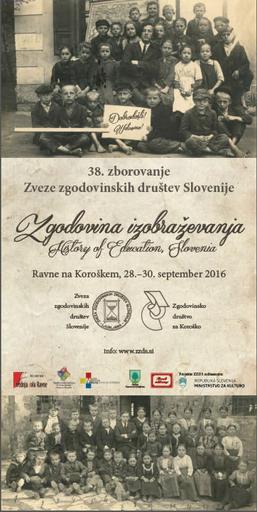
Avtor(ji):Dinko Župan
Soavtor(ji):Mislav Gregl (mod.)
Leto:2016
Založnik(i):Zveza zgodovinskih društev Slovenije, Ljubljana, Inštitut za novejšo zgodovino, Ljubljana
Jezik(i):angleščina
Vrst(e) gradiva:video
Ključne besede:education of women, Austro-Hungarian Monarchy, France, England, second half of the 19th century, izobraževanje žensk, Avstro-Ogrska monarhija, Francija, Anglija, druga polovica 19. stoletja
Avtorske pravice:

To delo avtorja Dinko Župan je ponujeno pod Creative Commons Priznanje avtorstva-Nekomercialno-Brez predelav 4.0 Mednarodna
Datoteke (5)
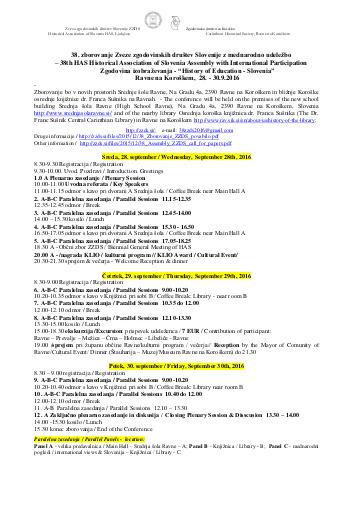
Ime:program-38-zborovanja-ZZDS.pdf
Velikost:313.04KB
Format:application/pdf
Stalna povezava:https://hdl.handle.net/11686/file22602
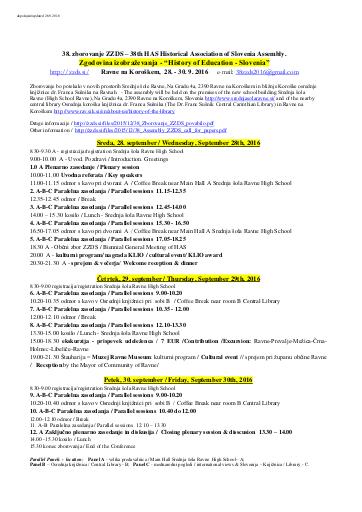
Ime:program-38-zborovanja-ZZDS-SLO-ANG.pdf
Velikost:303.57KB
Format:application/pdf
Stalna povezava:https://hdl.handle.net/11686/file22603
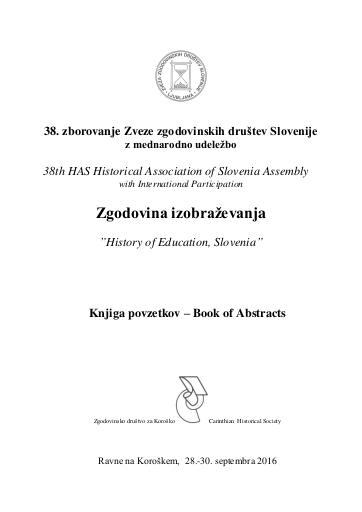
Ime:Knjiga-povzetkov–book-of-abstracts.pdf
Velikost:895.33KB
Format:application/pdf
Stalna povezava:https://hdl.handle.net/11686/file22604
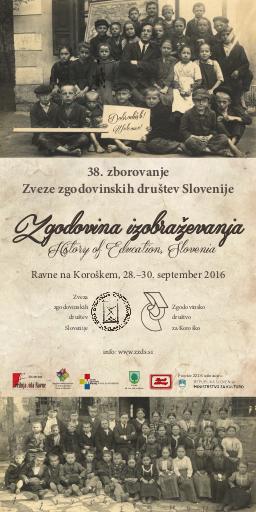
Ime:Plakat-38-zborovanja-ZZDS.pdf
Velikost:1.36MB
Format:application/pdf
Stalna povezava:https://hdl.handle.net/11686/file22605
Opis
I will try to present the comparative approach to women’s education in France, England and AustroHungarian Monarchy in the second half of the 19th century. The main goals in schools’ politics of women’s education in France, England and Austro-Hungarian Monarchy is similar to construction of ideal image of womanhood. School’s politics of women’s education in the second half of the 19th century was primarily based on constructing desirable gender and class identities. According to the opinions of the then educational authorities and psychologists, the aim of the school system was to turn the female students into good mothers, wives and housewives. “The real woman” was the one who completely fulfilled her duties as a mother, wife and housewife, she is the one who was modest, obedient, diligent, lovely, religious, silent, shy and patient. This “natural” characteristics of femininity was presented in the pedagogical discourse in France, England and Austro-Hungarian Monarchy. During the 19th century the education system was built on the idea that Foucault calls “the regime of truth”. The knowledge and power were mutually connected and the education system used it to influence the cultural construction of female identities.
Metapodatki (12)
- identifikatorhttps://hdl.handle.net/11686/37423
- naslov
- A Comparative Approach to Education Of Women in France, England and Austro-Hungarian Monarchy in The Second Half of the 19th Century
- avtor
- Dinko Župan
- soavtor
- Mislav Gregl (mod.)
- predmet
- education of women
- Austro-Hungarian Monarchy
- France
- England
- second half of the 19th century
- izobraževanje žensk
- Avstro-Ogrska monarhija
- Francija
- Anglija
- druga polovica 19. stoletja
- opis
- I will try to present the comparative approach to women’s education in France, England and AustroHungarian Monarchy in the second half of the 19th century. The main goals in schools’ politics of women’s education in France, England and Austro-Hungarian Monarchy is similar to construction of ideal image of womanhood. School’s politics of women’s education in the second half of the 19th century was primarily based on constructing desirable gender and class identities. According to the opinions of the then educational authorities and psychologists, the aim of the school system was to turn the female students into good mothers, wives and housewives. “The real woman” was the one who completely fulfilled her duties as a mother, wife and housewife, she is the one who was modest, obedient, diligent, lovely, religious, silent, shy and patient. This “natural” characteristics of femininity was presented in the pedagogical discourse in France, England and Austro-Hungarian Monarchy. During the 19th century the education system was built on the idea that Foucault calls “the regime of truth”. The knowledge and power were mutually connected and the education system used it to influence the cultural construction of female identities.
- založnik
- Zveza zgodovinskih društev Slovenije
- Inštitut za novejšo zgodovino
- datum
- 2016
- 28. 09. 2016
- tip
- video
- jezik
- Angleščina
- jeDelOd
- pravice
- licenca: ccByNcNd
